Golf
Gary Player: The Black Knight of Golf
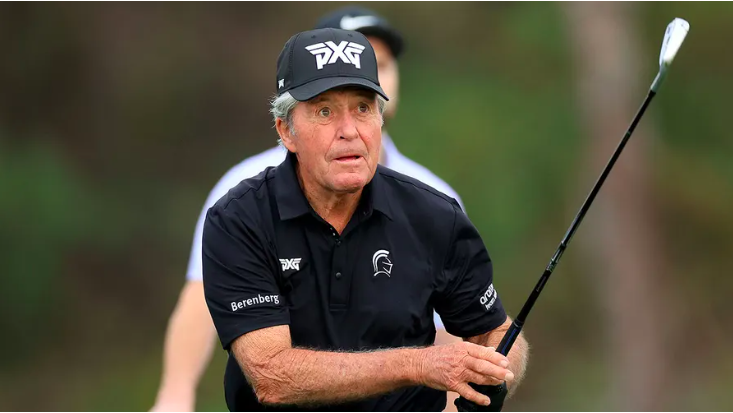
Gary Player: The Black Knight of Golf
Gary Player, affectionately known as “The Black Knight,” stands as one of the most iconic and successful figures in the history of golf. With a career spanning over six decades, Player has amassed nine major championships and countless international victories. Beyond his achievements on the course, he is renowned for his dedication to fitness, his influence on golf course design, and his extensive philanthropic efforts. This comprehensive article delves into Gary Player’s extraordinary journey, his contributions to the sport, and the lasting legacy he has created.
Early Life and Career Beginnings
A Star is Born
Gary Player was born on November 1, 1935, in Johannesburg, South Africa. From a young age, he demonstrated an exceptional talent for golf. By the time he was 14, he was already making a name for himself in the South African junior golf circuit. His father, a gold miner, recognized his son’s potential and supported his aspirations despite the family’s modest means.
Turning Professional
At the age of 17, Gary Player turned professional. His early career was marked by rapid success, as he quickly began winning tournaments in South Africa and abroad. His determination, combined with a rigorous fitness regimen, set him apart from his contemporaries and laid the foundation for his future success.
Rise to Prominence
First Major Victory
Gary Player’s first major championship victory came at the 1959 British Open. This triumph not only established him as a major force in golf but also marked the beginning of his illustrious career on the international stage. His victory at Muirfield was a testament to his skill and mental fortitude, qualities that would define his career.
The Grand Slam
One of Gary Player’s most remarkable achievements is completing the career Grand Slam, which involves winning all four of golf’s major championships. Player accomplished this feat with victories at the Masters, U.S. Open, British Open, and PGA Championship. He remains one of only five golfers in history to achieve this prestigious milestone.
Fitness and Longevity
Pioneering Fitness in Golf
Gary Player was a pioneer in emphasizing physical fitness as an integral part of golf. At a time when many golfers did not prioritize fitness, Player adopted a rigorous exercise routine that included weight training, cardio workouts, and a disciplined diet. His commitment to fitness not only enhanced his performance but also contributed to his longevity in the sport.
Impact on Future Generations
Player’s dedication to fitness has inspired countless golfers to incorporate physical training into their routines. His advocacy for a healthy lifestyle has had a lasting impact on the sport, influencing modern players to prioritize their physical well-being.
Major Championships and Memorable Victories
The Majors
Gary Player’s major championship victories are a testament to his skill and versatility. His nine major wins include:
- The Masters (1961, 1974, 1978)
- The U.S. Open (1965)
- The British Open (1959, 1968, 1974)
- The PGA Championship (1962, 1972)
Each of these victories showcased his ability to perform under pressure and adapt to different courses and conditions.
Memorable Wins
Among his numerous victories, a few stand out as particularly memorable. His triumph at the 1978 Masters, where he made a historic comeback by shooting a final round of 64, is often cited as one of the greatest rounds in golf history. Similarly, his win at the 1965 U.S. Open, which completed his career Grand Slam, is a highlight of his illustrious career.
Golf Course Design
A Visionary Designer
In addition to his success as a player, Gary Player has made significant contributions to golf course design. His design philosophy emphasizes sustainability, playability, and the natural beauty of the landscape. Over the years, he has designed over 400 golf courses in more than 35 countries.
Notable Courses
Some of Gary Player’s most notable courses include:
- The Links at Fancourt (South Africa)
- Thracian Cliffs (Bulgaria)
- Gary Player Country Club (South Africa)
These courses are renowned for their challenging layouts and stunning aesthetics, attracting golfers from around the world.
Philanthropy and Legacy
The Gary Player Foundation
Gary Player’s philanthropic efforts are as impressive as his golfing achievements. The Gary Player Foundation, established in 1983, focuses on improving education, nutrition, and health for underprivileged children around the world. The foundation has raised millions of dollars for various charitable causes and has positively impacted countless lives.
Legacy Beyond Golf
Player’s legacy extends beyond his accomplishments on the golf course. His contributions to fitness, golf course design, and philanthropy have left an indelible mark on the sport and the world. He continues to inspire future generations of golfers and remains an ambassador for the game.
Gary Player’s Impact on Global Golf
Promoting Golf Worldwide
Gary Player has played a pivotal role in promoting golf globally. His international success and ambassadorial work have helped grow the sport in countries where it was previously less popular. He has been instrumental in bringing golf to new audiences and expanding its reach.
Influence on Modern Golf
Player’s influence on modern golf is profound. His emphasis on fitness, mental toughness, and a global approach to the sport has shaped the way contemporary golfers approach the game. His legacy is evident in the practices and philosophies of today’s top players.
Personal Life and Interests
Family and Values
Gary Player is a family man who values his relationships deeply. He has been married to his wife, Vivienne, for over six decades, and together they have raised six children. Player’s commitment to family and his strong values have been a cornerstone of his life and career.
Hobbies and Passions
Outside of golf, Player has a wide range of interests. He is an avid horse breeder, fitness enthusiast, and philanthropist. His diverse passions reflect his multifaceted personality and his commitment to living a fulfilling and active life.
Challenges and Triumphs
Overcoming Adversity
Throughout his career, Gary Player has faced numerous challenges, including political and social adversity during the apartheid era in South Africa. Despite these obstacles, he remained focused on his goals and achieved success through perseverance and determination.
Continued Success
Even in his later years, Player continues to compete in senior golf tournaments and remains active in the golfing community. His enduring success is a testament to his dedication and passion for the sport.
Future Aspirations and Continuing Legacy
Mentorship and Inspiration
Gary Player is dedicated to mentoring young golfers and sharing his knowledge and experience. He continues to inspire the next generation of players through his coaching and public speaking engagements. His commitment to the future of golf ensures that his legacy will continue to influence the sport for years to come.
Ongoing Contributions
Player’s ongoing contributions to golf course design, philanthropy, and global promotion of the sport highlight his enduring impact. His vision and dedication to excellence continue to shape the future of golf.
Conclusion
Gary Player’s extraordinary career and contributions to golf make him one of the sport’s most revered figures. His achievements on the course, pioneering approach to fitness, and philanthropic efforts have left a lasting legacy. As “The Black Knight,” he has inspired countless individuals and transformed the landscape of golf. His story is a testament to the power of dedication, resilience, and a passion for excellence.
Frequently Asked Questions (FAQs)
What are Gary Player’s most significant achievements in golf?
Gary Player’s most significant achievements include winning nine major championships, completing the career Grand Slam, and amassing numerous international victories. He is also known for his contributions to golf course design and philanthropy.
How did Gary Player revolutionize fitness in golf?
Gary Player revolutionized fitness in golf by incorporating rigorous exercise routines and a disciplined diet into his training. His emphasis on physical fitness set a new standard for golfers and influenced future generations to prioritize their health and fitness.
What is the Gary Player Foundation?
The Gary Player Foundation is a charitable organization founded by Gary Player in 1983. It focuses on improving education, nutrition, and health for underprivileged children worldwide. The foundation has raised millions of dollars and made a significant impact on communities around the globe.
How has Gary Player influenced modern golf course design?
Gary Player has influenced modern golf course design through his philosophy of sustainability, playability, and natural beauty. He has designed over 400 courses worldwide, creating challenging and aesthetically pleasing layouts that attract golfers of all skill levels.
What is Gary Player’s legacy in the world of golf?
Gary Player’s legacy in golf is multifaceted, encompassing his achievements as a player, contributions to fitness, influence on golf course design, and philanthropic efforts. He has inspired generations of golfers and left an indelible mark on the sport, ensuring his impact will be felt for years to come.
Golf
Justin Thomas Net Worth: Unveiling the Wealth of a Golfing Prodigy
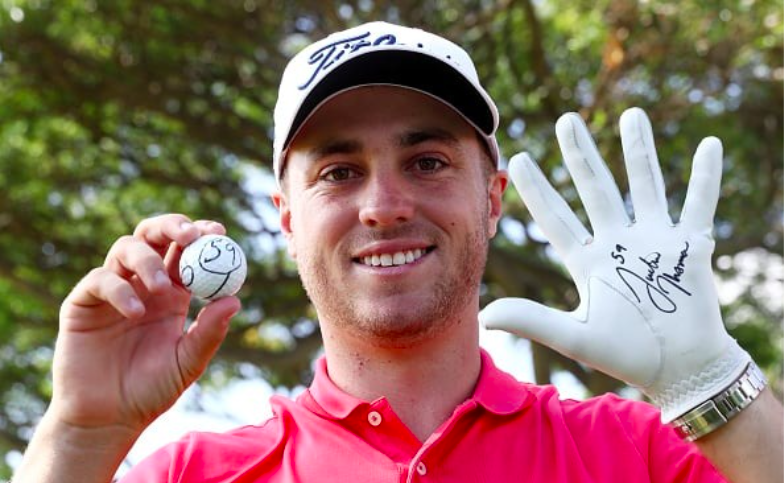
Justin Thomas Net Worth: Unveiling the Wealth of a Golfing Prodigy
Justin Thomas, an elite professional golfer, has made a significant mark in the world of golf with his impressive achievements and growing financial success. This article provides an in-depth analysis of Justin Thomas’s net worth, exploring his career milestones, endorsement deals, and personal investments. We aim to offer a comprehensive view of how Thomas has accumulated his wealth and what factors contribute to his financial standing.
Early Life and Career Beginnings
The Early Years
Justin Thomas was born on April 29, 1993, in Louisville, Kentucky. Growing up in a family with a strong golfing background, Thomas was introduced to the sport at a young age. His father, Mike Thomas, a PGA professional, played a crucial role in shaping his early interest in golf.
Thomas attended St. Xavier High School, where he showcased his golfing talent by winning several junior tournaments. His success in high school golf laid the foundation for his future career as a professional golfer.
Collegiate Achievements
After high school, Justin Thomas enrolled at the University of Alabama, where he played college golf under the guidance of Coach Jay Seawell. During his time at Alabama, Thomas achieved notable success, including winning the 2012 Haskins Award, given to the best college golfer in the country.
His collegiate career was marked by several victories and a national championship, which set the stage for his transition to professional golf.
Turning Professional
Professional Debut
In 2013, Justin Thomas turned professional, joining the PGA Tour after a successful stint on the Web.com Tour. His debut season was promising, with several top-10 finishes that indicated his potential to excel at the highest level of the sport.
Breakthrough Victories
Thomas’s breakthrough came in 2015 when he won his first PGA Tour event at the CIMB Classic. This victory was a significant milestone in his career, demonstrating his ability to compete and succeed on the global stage.
Since then, Thomas has accumulated multiple victories on the PGA Tour, including major championships and prestigious tournaments. His consistent performance and impressive skills have cemented his status as one of the top golfers in the world.
Career Achievements
Major Championships
Justin Thomas’s career has been highlighted by several major victories. One of his most significant achievements was winning the PGA Championship in 2017. This victory not only earned him a substantial prize but also solidified his reputation as a top golfer.
Thomas’s victory at the PGA Championship was a testament to his skill and determination. It marked a turning point in his career, elevating him to the upper echelons of professional golf.
Other Notable Wins
In addition to his major championship victory, Thomas has accumulated several other notable wins on the PGA Tour. Some of his key victories include:
- 2016 SBS Tournament of Champions
- 2019 The Players Championship
- 2020 WGC-FedEx St. Jude Invitational
Each of these victories has contributed to Thomas’s growing net worth and established him as a prominent figure in the world of golf.
Endorsements and Sponsorships
Lucrative Endorsement Deals
Justin Thomas’s success on the golf course has attracted several high-profile endorsements and sponsorships. Companies such as Titleist, Rolex, and Citi have partnered with Thomas, providing him with lucrative endorsement deals.
Titleist has been a significant sponsor, providing Thomas with equipment and apparel that enhance his performance on the course. Rolex and Citi have also contributed to his financial success through endorsement deals that highlight his status as a top golfer.
Impact on Net Worth
Endorsements and sponsorships play a crucial role in augmenting Justin Thomas’s net worth. The financial backing from these companies allows Thomas to focus on his game while benefiting from substantial financial rewards.
Personal Life and Investments
Family and Relationships
Justin Thomas is known for his close-knit family and strong relationships. He is engaged to his longtime girlfriend, Jillian, and the couple’s relationship is a significant aspect of Thomas’s personal life.
Real Estate and Investments
In addition to his earnings from golf and endorsements, Justin Thomas has made several strategic investments in real estate. Owning properties in prime locations contributes significantly to his overall net worth. His investments reflect a well-thought-out approach to securing his financial future beyond his golfing career.
Philanthropy and Community Involvement
Charitable Contributions
Justin Thomas is actively involved in various charitable endeavors. He supports organizations such as The Justin Thomas Foundation, which focuses on providing educational opportunities and supporting youth development programs.
Thomas’s commitment to philanthropy not only enhances his public image but also underscores his dedication to giving back to the community.
Net Worth Estimation
Financial Overview
As of 2024, Justin Thomas’s estimated net worth is approximately $50 million. This figure includes earnings from his PGA Tour victories, endorsement deals, and investments. Thomas’s financial success is a result of his exceptional skills, strategic financial management, and savvy investments.
Comparison with Peers
When compared to other professional golfers, Thomas’s net worth places him among the top earners in the sport. His achievements on the course, combined with lucrative endorsements and smart investments, contribute to his impressive financial standing.
Conclusion
Justin Thomas’s rise from a promising amateur to a top professional golfer is a testament to his talent, hard work, and strategic financial planning. His significant victories, high-profile endorsements, and strategic investments have contributed to his impressive net worth. As Thomas continues to excel on the PGA Tour and engage in philanthropic efforts, his legacy in the world of golf remains firmly established.
Frequently Asked Questions (FAQs)
How did Justin Thomas become a successful professional golfer?
Justin Thomas achieved success through his outstanding performances on the PGA Tour, including major victories and consistent play. His career was marked by several key wins, such as the 2017 PGA Championship.
What are some of Justin Thomas’s major golf achievements?
Major achievements include winning the PGA Championship in 2017, the SBS Tournament of Champions in 2016, and The Players Championship in 2019.
Which companies endorse Justin Thomas?
Justin Thomas has endorsement deals with companies such as Titleist, Rolex, and Citi, which provide him with financial backing and support.
How does Justin Thomas manage his personal life?
Justin Thomas maintains a close relationship with his family and is engaged to his longtime girlfriend. Balancing his personal life with his professional career is an important aspect of his life.
What philanthropic efforts is Justin Thomas involved in?
Justin Thomas supports various charitable organizations through The Justin Thomas Foundation, focusing on educational opportunities and youth development programs.
Golf
Webb Simpson Net Worth: The Rise of a Golfing Legend
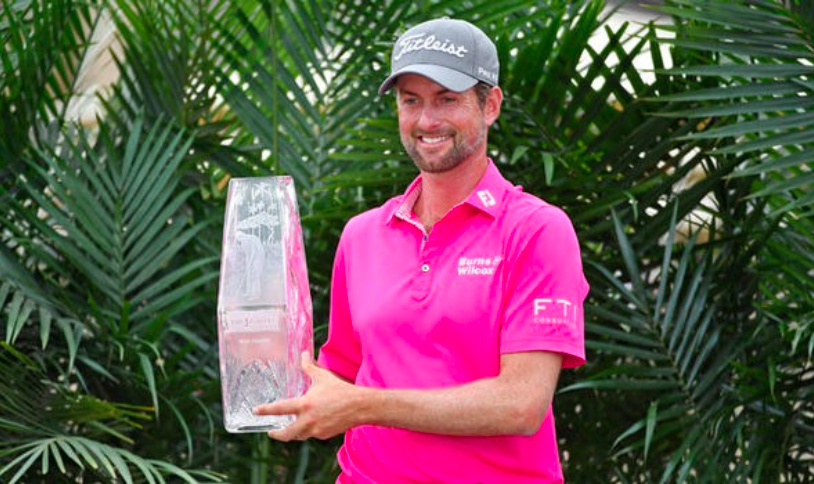
Webb Simpson Net Worth: The Rise of a Golfing Legend
Webb Simpson, an American professional golfer, has captivated fans with his impressive skills and dedication to the sport. Known for his remarkable achievements on the PGA Tour, Simpson’s journey from a promising amateur to a celebrated professional is a testament to his hard work and talent. This comprehensive article explores Webb Simpson’s net worth, career milestones, and personal life, providing a detailed look at the factors that contribute to his financial success.
Early Life and Career Beginnings
A Promising Start
Webb Simpson was born on August 8, 1985, in Raleigh, North Carolina. Growing up in a sports-oriented family, Simpson was introduced to golf at a young age. His father, a passionate golfer himself, played a significant role in nurturing Simpson’s early interest in the sport.
Simpson attended Broughton High School, where he quickly gained recognition for his golfing prowess. His high school career was marked by several notable achievements, including winning the North Carolina High School Athletic Association 4A State Championship.
Collegiate Success
After high school, Simpson continued to hone his skills at the University of Georgia. During his time at college, he became a standout player on the college golf circuit. His success at Georgia, where he was a member of the All-American team, set the stage for his transition to professional golf.
Turning Professional
Early Professional Years
In 2008, Webb Simpson turned professional and joined the Nationwide Tour (now the Korn Ferry Tour). His performance on the tour was impressive, and he quickly gained attention for his potential. Simpson’s breakthrough came in 2011 when he secured his first PGA Tour victory at the Wyndham Championship.
Rising Through the Ranks
Simpson’s victory at the Wyndham Championship marked the beginning of a successful career. Over the years, he continued to build on this success with multiple wins and high finishes in major tournaments. His consistency and skill on the course earned him a spot among the top golfers in the world.
Career Achievements
Major Victories
Webb Simpson’s career has been highlighted by several major victories. One of his most significant achievements came in 2012 when he won the U.S. Open. This victory solidified his reputation as one of the top golfers of his generation.
Simpson’s U.S. Open win was a testament to his ability to perform under pressure. The win not only earned him substantial prize money but also elevated his status in the golfing world.
Other Notable Wins
In addition to his major victory, Simpson has accumulated several other wins on the PGA Tour. Some of his notable wins include:
- 2011 Wyndham Championship
- 2018 The Players Championship
- 2019 RSM Classic
Each of these victories has contributed to Simpson’s growing net worth and established him as a prominent figure in professional golf.
Endorsements and Sponsorships
High-Profile Endorsements
Webb Simpson’s success on the golf course has attracted several high-profile endorsements and sponsorships. Companies such as Titleist, FootJoy, and Ping have partnered with Simpson, providing him with lucrative endorsement deals.
Titleist and FootJoy have been particularly significant in Simpson’s career, offering him equipment and apparel that enhance his performance on the course. These endorsements not only contribute to Simpson’s income but also bolster his public image.
Impact on Net Worth
Endorsements and sponsorships play a crucial role in augmenting Webb Simpson’s net worth. The financial backing from these companies allows Simpson to focus on his game while benefiting from substantial financial rewards.
Personal Life and Investments
Family Life
Webb Simpson is married to his college sweetheart, Dowdie. The couple has four children together, and Simpson is known for his strong family values. Balancing his professional career with family life has been an important aspect of Simpson’s personal life.
Real Estate Investments
In addition to his earnings from golf and endorsements, Simpson has made several smart investments in real estate. Owning properties in prime locations contributes significantly to his overall net worth. His investments reflect a strategic approach to securing his financial future beyond his golfing career.
Philanthropy and Community Involvement
Charitable Contributions
Webb Simpson is actively involved in various charitable endeavors. He supports organizations such as The First Tee, which promotes golf among young people, and Operation Smile, which provides medical treatment to children in need.
Simpson’s commitment to philanthropy not only enhances his public image but also underscores his dedication to giving back to the community.
Net Worth Estimation
Financial Overview
As of 2024, Webb Simpson’s estimated net worth is approximately $25 million. This figure includes earnings from his PGA Tour victories, endorsement deals, and investments. Simpson’s financial success is a result of his hard work, skill, and strategic financial management.
Comparison with Peers
When compared to other professional golfers, Simpson’s net worth places him among the top earners in the sport. His achievements on the course, combined with lucrative endorsements and smart investments, contribute to his impressive financial standing.
Conclusion
Webb Simpson’s journey from a promising amateur to a successful professional golfer is a testament to his dedication and skill. His significant victories, high-profile endorsements, and strategic investments have contributed to his impressive net worth. As Simpson continues to excel on the PGA Tour and engage in philanthropic efforts, his legacy in the world of golf remains firmly established.
Frequently Asked Questions (FAQs)
How did Webb Simpson rise to prominence in professional golf?
Webb Simpson gained prominence through his impressive performances on the PGA Tour, including his major victory at the 2012 U.S. Open. His consistent play and multiple wins have solidified his reputation as a top golfer.
What are some of Webb Simpson’s most notable golf achievements?
Notable achievements include his victory at the 2012 U.S. Open, the 2011 Wyndham Championship, the 2018 Players Championship, and the 2019 RSM Classic.
What companies have endorsed Webb Simpson?
Webb Simpson has endorsement deals with companies such as Titleist, FootJoy, and Ping, which provide him with equipment and apparel.
How does Webb Simpson balance his professional and personal life?
Simpson balances his career with family life by maintaining strong family values and making time for his wife and four children. His personal life is important to him, and he ensures it complements his professional commitments.
What philanthropic efforts is Webb Simpson involved in?
Webb Simpson supports organizations like The First Tee and Operation Smile, contributing to causes that promote youth golf and provide medical care to children in need.
Golf
Louis Oosthuizen’s Net Worth: A Detailed Look at His Wealth

Louis Oosthuizen’s Net Worth: A Detailed Look at His Wealth
Louis Oosthuizen, a name synonymous with golfing excellence, has left an indelible mark on the sport. With a career filled with remarkable achievements, including a major championship win at the 2010 Open Championship, Oosthuizen has become one of the most respected golfers in the world. But beyond his success on the greens, many fans and followers are curious about his financial standing. In this article, we delve deep into Louis Oosthuizen’s net worth, exploring the various sources of his income, his lifestyle, and how his wealth has evolved over the years.
Early Life and Career Beginnings
Humble Beginnings in South Africa
Louis Oosthuizen was born on October 19, 1982, in Mossel Bay, South Africa. Growing up in a modest family, Oosthuizen’s journey to becoming a world-class golfer was anything but easy. His love for the game was evident from a young age, and despite financial constraints, he pursued his passion with unwavering determination.
Breaking into the Professional Golf Scene
Oosthuizen’s professional career began in 2002 when he joined the Sunshine Tour, the main professional golf tour in Southern Africa. His early years were marked by consistent performances, and by 2004, he had secured his first victory. This win was a significant milestone, as it not only boosted his confidence but also laid the foundation for his future success on the international stage.
Major Career Milestones
The 2010 Open Championship
The pinnacle of Louis Oosthuizen’s career came in 2010 when he won The Open Championship at St Andrews. This victory catapulted him to global fame and significantly impacted his net worth. Oosthuizen’s performance was nothing short of spectacular, as he led the tournament from start to finish, eventually winning by a comfortable margin of seven strokes.
Consistent Performances in Major Championships
Since his triumph at The Open, Oosthuizen has continued to perform well in major championships. He has finished as a runner-up in all four majors, including the Masters, U.S. Open, and PGA Championship. These consistent top-tier finishes have not only solidified his reputation as a world-class golfer but have also contributed significantly to his earnings.
Louis Oosthuizen’s Earnings and Endorsements
Prize Money from Tournaments
One of the primary sources of Louis Oosthuizen’s net worth is the prize money he has earned from various tournaments. Over the years, his consistent performances have ensured a steady flow of income. As of 2024, his career earnings from professional golf tournaments alone are estimated to be in the millions.
Lucrative Endorsement Deals
Apart from his earnings on the golf course, Oosthuizen has also secured several lucrative endorsement deals. Companies such as Ping, Titleist, and FootJoy have partnered with him, recognizing his value as a brand ambassador. These endorsements have not only increased his income but have also played a crucial role in enhancing his global brand image.
Investments and Business Ventures
Louis57 Wines
Louis Oosthuizen is not just a golfer; he is also an astute businessman. One of his most notable ventures is Louis57 Wines, a brand that reflects his passion for winemaking. Based in South Africa, Louis57 Wines has grown significantly since its inception, contributing to Oosthuizen’s overall net worth.
Real Estate Investments
In addition to his business ventures, Oosthuizen has made several smart real estate investments. He owns properties in South Africa and the United States, including a stunning estate in Florida. These properties not only serve as luxurious residences but also add to his financial portfolio.
Louis Oosthuizen’s Lifestyle and Philanthropy
A Simple Yet Luxurious Lifestyle
Despite his wealth, Louis Oosthuizen is known for leading a relatively simple life. He enjoys spending time with his family on his farm in South Africa, where he indulges in his love for agriculture. However, this simplicity does not mean he doesn’t enjoy the finer things in life. Oosthuizen’s homes, cars, and lifestyle choices reflect a man who appreciates luxury, albeit in a modest way.
Philanthropic Efforts
Oosthuizen is also deeply committed to giving back to the community. Through his Louis Oosthuizen Junior Golf Academy, he supports young and aspiring golfers in South Africa. His philanthropic efforts extend beyond golf, as he is involved in various charitable initiatives aimed at improving the lives of underprivileged communities.
Comparing Louis Oosthuizen’s Net Worth with Other Golfers
Oosthuizen vs. Ernie Els
When comparing Louis Oosthuizen’s net worth to other South African golfing legends like Ernie Els, it’s clear that both have made significant contributions to the sport. While Els’ net worth is higher, Oosthuizen’s steady growth in earnings and investments indicates that he is on a similar trajectory.
HGlobal Comparisons
On a global scale, Oosthuizen’s net worth may not rival the likes of Tiger Woods or Phil Mickelson, but it is still substantial. His prudent financial decisions, coupled with his success on the course, have ensured that he remains one of the wealthiest golfers in the world.
The Future of Louis Oosthuizen’s Net Worth
Upcoming Tournaments and Potential Earnings
As Oosthuizen continues to compete at the highest level, there is no doubt that his net worth will keep growing. His participation in upcoming tournaments presents opportunities for further earnings, both in terms of prize money and endorsement deals.
Expanding Business Ventures
In addition to his golfing career, Oosthuizen’s business ventures are likely to expand. With the success of Louis57 Wines and his real estate investments, it’s expected that he will continue to diversify his income streams, further increasing his net worth.
Conclusion
Louis Oosthuizen’s journey from a small town in South Africa to becoming one of the wealthiest golfers in the world is nothing short of inspirational. His net worth is a testament to his hard work, dedication, and smart financial decisions. As he continues to compete and grow his business ventures, there’s no doubt that Oosthuizen’s financial future looks incredibly bright.
Frequently Asked Questions (FAQs)
What is Louis Oosthuizen’s current net worth?
As of 2024, Louis Oosthuizen’s net worth is estimated to be around $40 million. This figure includes his earnings from golf tournaments, endorsements, business ventures, and real estate investments.
How did Louis Oosthuizen make his fortune?
Louis Oosthuizen made his fortune through a combination of prize money from professional golf tournaments, lucrative endorsement deals, and smart investments in businesses like Louis57 Wines and real estate.
Does Louis Oosthuizen have any other business ventures?
Yes, in addition to his golf career, Louis Oosthuizen owns Louis57 Wines and has made several real estate investments. These ventures have contributed significantly to his net worth.
How does Louis Oosthuizen spend his money?
Louis Oosthuizen leads a relatively simple life, with a focus on family and agriculture. However, he also enjoys the luxuries of life, owning properties in South Africa and the United States. He is also actively involved in philanthropy, particularly in supporting young golfers.
What are Louis Oosthuizen’s plans for the future?
Louis Oosthuizen plans to continue competing in professional golf tournaments while expanding his business ventures. His focus remains on growing his brand, increasing his net worth, and giving back to the community through his philanthropic efforts.
-

 NBA4 months ago
NBA4 months agoLaMelo Ball Net Worth: A Comprehensive Look at the NBA Star’s Financial Empire
-

 Football5 months ago
Football5 months agoMeet the World Football Celebrities and Their Stories
-
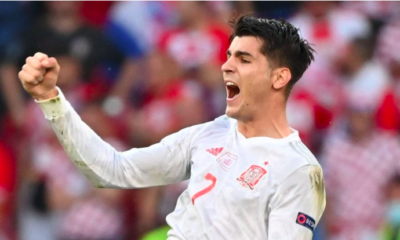
 Football4 months ago
Football4 months agoEuro 2024: Alvaro Morata Speaks Out About ‘No Respect’ in Spain
-

 Game5 months ago
Game5 months agoThe Ultimate Guide to General Multi-Sport Events
-

 Football4 months ago
Football4 months agoEuro 2024 Power Rankings: Spain Remains Dominant Ahead of Semifinals
-
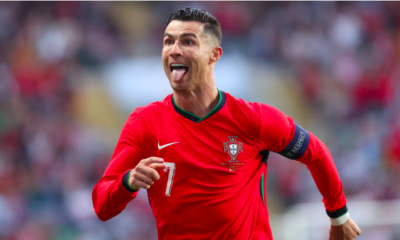
 Football4 months ago
Football4 months agoRonaldo’s Business Ventures and Investments (CR7 Brand)
-

 NBA5 months ago
NBA5 months agoTop NBA Celebrities in the World: The Biggest Stars
-
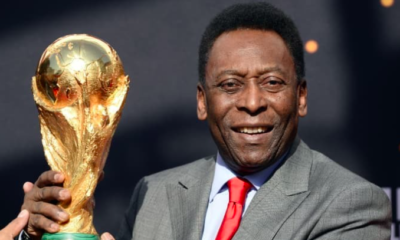
 Sports6 months ago
Sports6 months agoPele: The Legendary Journey of Football’s Greatest Icon | The Immortal King of Football




